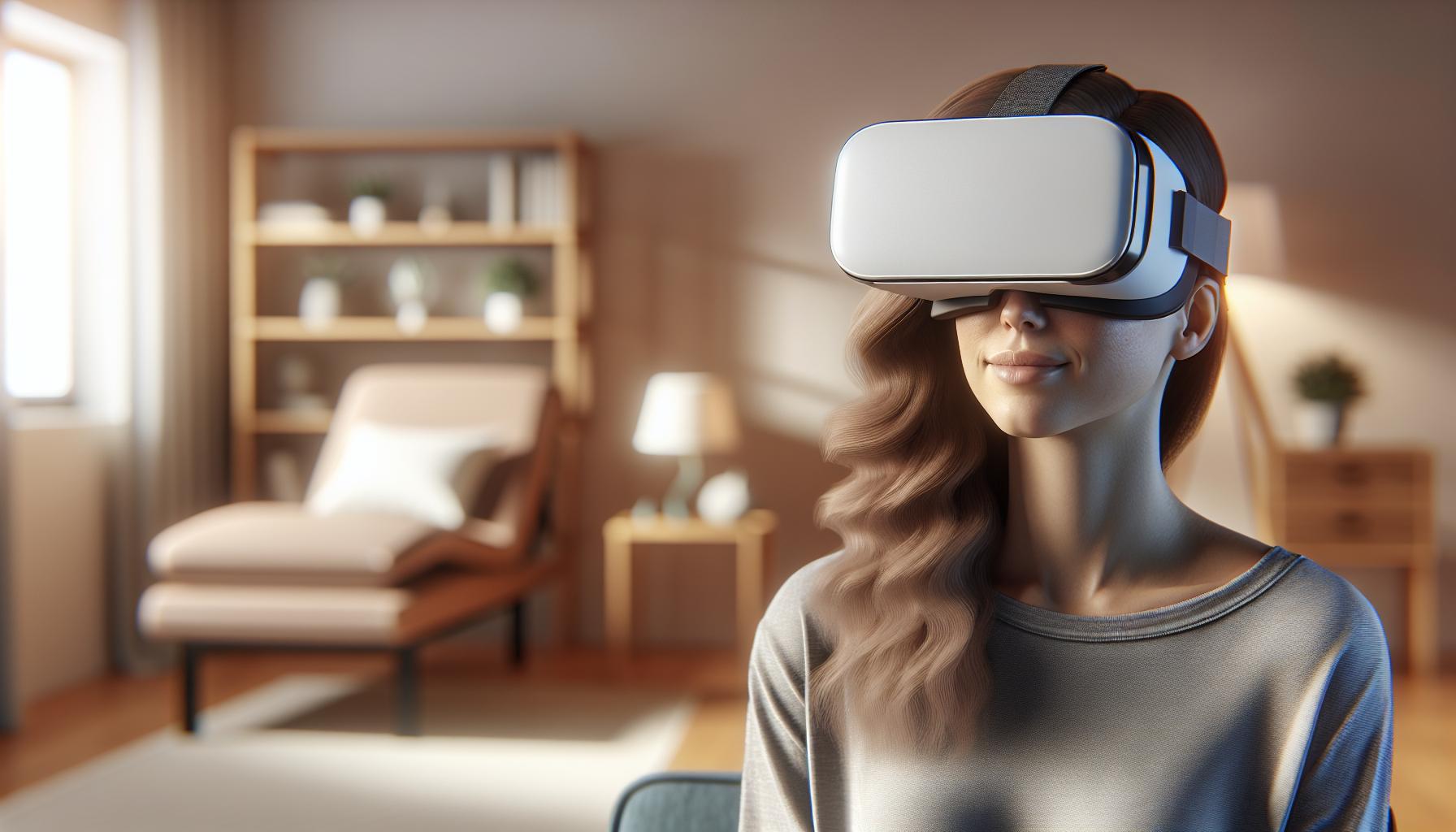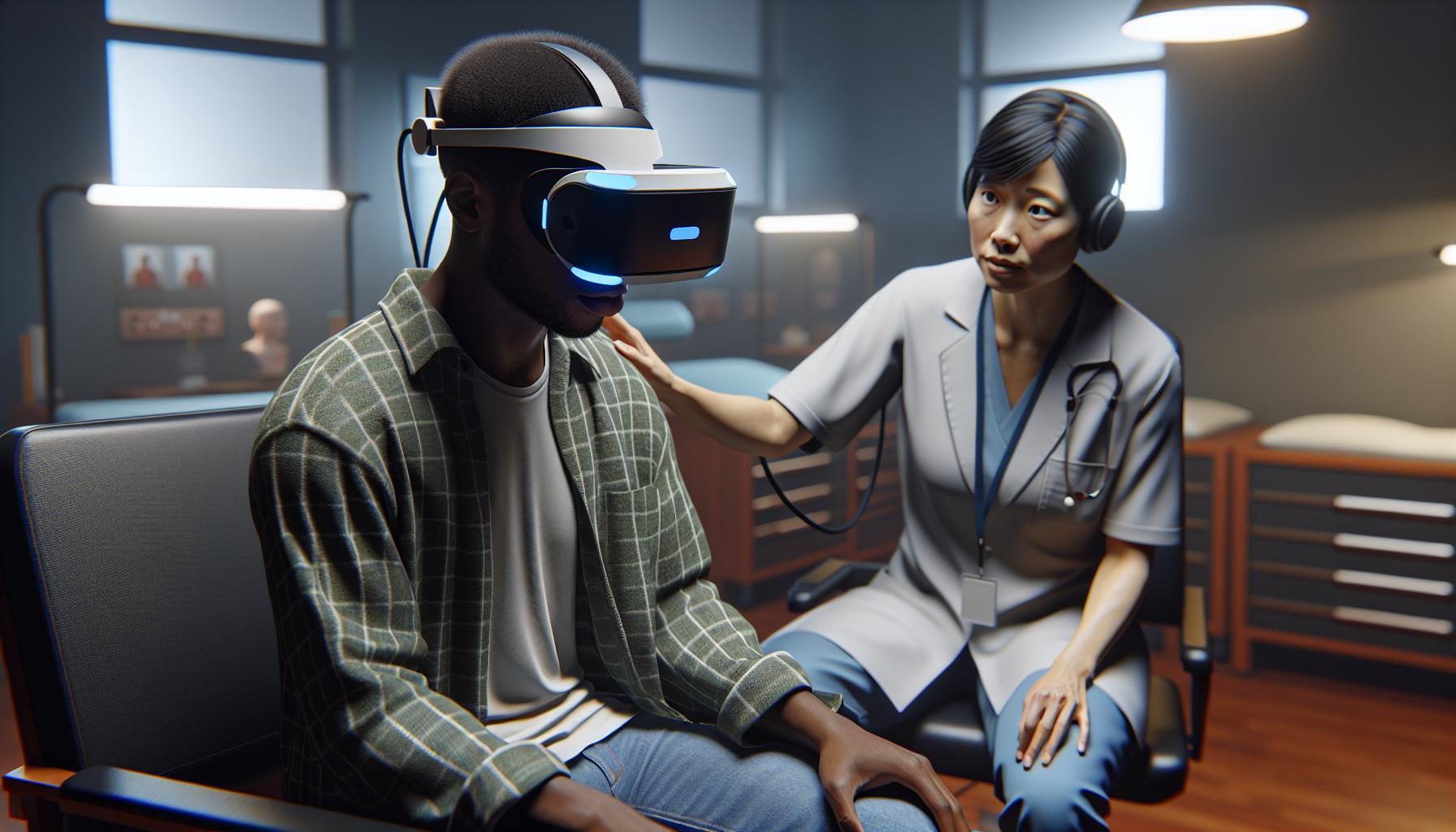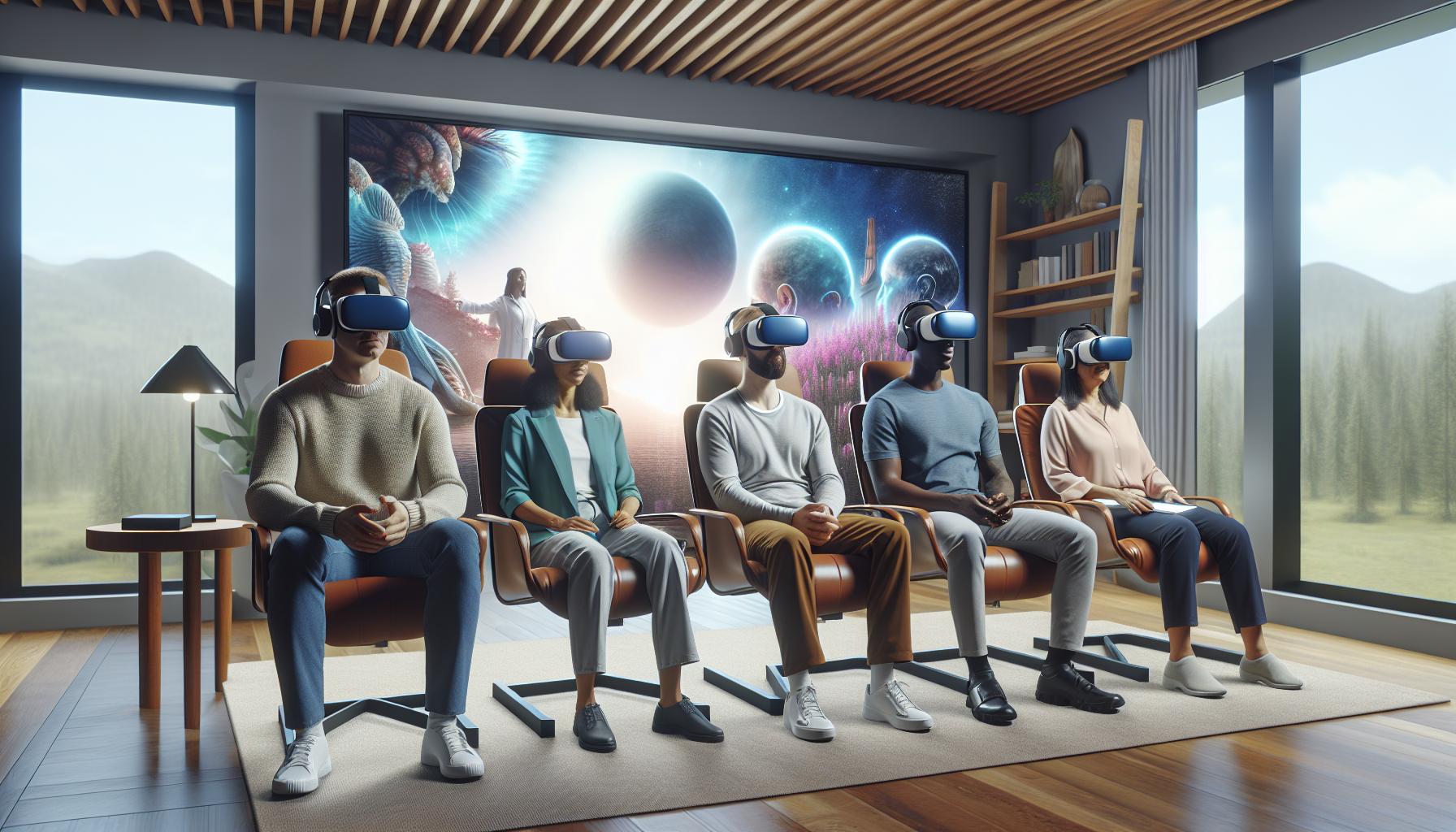Virtual reality exposure therapy (VRET) revolutionizes the way psychologists treat anxiety disorders phobias and PTSD. By combining cutting-edge VR technology with traditional exposure therapy techniques this innovative approach creates immersive environments where patients can safely confront their fears.
Think of VRET as a psychological time machine that transports patients into controlled virtual scenarios – from crowded elevators to dizzying heights. Unlike traditional therapy methods VRET offers therapists precise control over the intensity and duration of exposure while providing patients with a safe space to develop coping mechanisms. It’s like having a pause button for anxiety where patients can practice facing their fears without real-world consequences.
Virtual Reality Exposure Therapy AP Psychology Definition
Virtual Reality Exposure Therapy (VRET) integrates digital technology with evidence-based psychological treatment principles. This therapeutic approach creates immersive environments that simulate real-world scenarios for systematic exposure treatment.
Core Components of VRET
Virtual Reality Exposure Therapy combines three essential elements: immersive VR technology, therapeutic protocols and psychological monitoring systems. The VR hardware includes head-mounted displays, motion sensors and haptic feedback devices that create realistic sensory experiences. Therapeutic protocols incorporate exposure hierarchies, anxiety measurement tools and personalized treatment plans for each patient’s specific condition. Real-time physiological monitoring tracks heart rate, skin conductance and other biological markers to assess patient responses during sessions. The therapy software allows therapists to adjust scenario intensity, duration and environmental factors based on patient progress.
Historical Development in Psychology
The origins of VRET trace back to 1992 when researchers at Clark Atlanta University conducted the first virtual reality therapy sessions for acrophobia treatment. Early systems utilized basic computer graphics with limited interactivity but demonstrated promising clinical outcomes. By 1995, VRET expanded to treat PTSD in Vietnam veterans through virtual combat scenarios. The technology evolved significantly in the 2000s with improved graphics processing, motion tracking capabilities and wireless headsets. Modern VRET systems incorporate artificial intelligence, eye tracking and biofeedback features that enhance therapeutic effectiveness. Leading psychology institutions now recognize VRET as a validated treatment modality for various anxiety disorders phobias trauma-related conditions.
The Science Behind VRET

Virtual Reality Exposure Therapy activates specific neural pathways through controlled environmental stimulation while engaging multiple sensory systems. The therapeutic effects stem from the brain’s neuroplasticity combined with established behavioral learning principles.
Neural Mechanisms
VRET stimulates the amygdala anxiety response center through virtual stimuli, triggering the same neural circuits involved in real-world fear responses. Brain imaging studies show decreased activity in the fear network regions after repeated VRET sessions, indicating successful fear extinction. The hippocampus creates new memory associations during therapy, replacing fear responses with adaptive behaviors. Research demonstrates that VRET activates the ventromedial prefrontal cortex, enhancing emotional regulation capacity. The virtual environment engages mirror neurons, facilitating learning through observation and simulation of adaptive responses.
Behavioral Learning Principles
VRET applies classical conditioning principles by pairing anxiety-provoking stimuli with relaxation techniques in virtual environments. Systematic desensitization occurs as patients progress through graduated exposure levels while maintaining physiological control. Operant conditioning reinforces positive coping behaviors through immediate feedback and success experiences in the virtual world. The therapy incorporates extinction learning by repeatedly presenting feared stimuli without adverse consequences. Social learning theory supports VRET’s effectiveness through modeling appropriate responses in various virtual scenarios. Research indicates that skills learned in VRET transfer effectively to real-world situations through stimulus generalization.
Applications in Clinical Psychology

Virtual Reality Exposure Therapy demonstrates significant efficacy across multiple psychological disorders in clinical settings. Clinical psychologists integrate VRET into treatment plans to address specific mental health conditions through controlled virtual environments.
Treating Anxiety Disorders
VRET protocols target generalized anxiety disorder social anxiety disorder panic disorder through customized virtual scenarios. The therapy creates social situations office environments public spaces that trigger anxiety responses in a controlled setting. Therapists monitor patient reactions in real-time adjusting exposure levels based on anxiety measurements heart rate skin conductance. Recent studies show VRET reduces anxiety symptoms in 75% of patients after 8-12 sessions.
| Anxiety Type | Success Rate | Average Sessions |
|---|---|---|
| Social Anxiety | 75% | 8-12 |
| Panic Disorder | 70% | 10-15 |
| GAD | 65% | 12-16 |
Managing PTSD and Phobias
VRET creates trauma-specific environments combat zones accident scenes heights spiders for targeted exposure treatment. Patients experience gradual exposure to fear triggers while maintaining complete control over the virtual environment. Clinical trials indicate VRET reduces PTSD symptoms by 60% after 12 sessions compared to traditional exposure therapy. The therapy addresses specific phobias with success rates reaching 80% for acrophobia arachnophobia claustrophobia.
| Condition | Symptom Reduction | Treatment Duration |
|---|---|---|
| PTSD | 60% | 12 sessions |
| Specific Phobias | 80% | 8-10 sessions |
| Combat-related PTSD | 65% | 14-16 sessions |
Benefits and Effectiveness

Virtual Reality Exposure Therapy (VRET) demonstrates significant therapeutic benefits across multiple psychological conditions. Clinical studies confirm its effectiveness in treating anxiety disorders phobias PTSD with measurable positive outcomes.
Research-Backed Outcomes
Clinical trials report success rates of 68% to 75% for anxiety disorders treated with VRET protocols. Studies show a reduction in PTSD symptoms by 60% after 8-12 sessions compared to 40% with traditional methods. Meta-analyses of VRET treatments indicate:
| Condition | Success Rate | Average Sessions |
|---|---|---|
| Specific Phobias | 80% | 8-10 |
| Social Anxiety | 75% | 12-14 |
| PTSD | 60% | 8-12 |
| Panic Disorder | 70% | 10-12 |
Neuroimaging research reveals decreased activation in fear-related brain regions after VRET treatment confirming its neurological impact.
Advantages Over Traditional Exposure
VRET offers enhanced control over exposure scenarios enabling precise customization of therapeutic environments. The technology creates consistent reproducible experiences that therapists modify based on patient progress. Key advantages include:
- Complete environmental control for precise stimulus presentation
- Real-time physiological monitoring of patient responses
- Reduced treatment costs through reusable virtual scenarios
- Enhanced privacy protection during therapy sessions
- Immediate safety measures through instant scenario termination
VRET eliminates logistical challenges associated with in-vivo exposure such as weather dependencies location accessibility scheduling conflicts. The technology maintains therapeutic effectiveness while providing greater convenience accessibility for both patients therapists.
Integration With Treatment Plans
Virtual Reality Exposure Therapy (VRET) integration requires systematic assessment protocols tailored clinical procedures to maximize therapeutic outcomes. Clinical psychologists incorporate VRET into existing treatment frameworks through structured implementation strategies.
Assessment and Patient Selection
Patient selection for VRET begins with comprehensive psychological evaluations measuring anxiety levels physiological responses cognitive functioning. Clinical assessments include standardized tests mental health screenings medical history reviews to determine VRET suitability. Key evaluation criteria encompass:
- Technology comfort levels spanning device familiarity motion sensitivity preferences
- Severity ratings for target symptoms using validated clinical scales
- Physical health markers indicating cardiovascular respiratory system stability
- Cognitive capacity measures focusing on spatial awareness processing speed
- Motivation assessments gauging treatment readiness commitment levels
Therapeutic Protocol Design
VRET protocols follow evidence-based frameworks adapted to individual patient needs circumstances. Treatment designs integrate:
- Exposure hierarchies ranging from mild to severe anxiety-inducing scenarios
- Session duration parameters spanning 30-60 minutes per virtual exposure
- Progress metrics tracking subjective units of distress (SUDS) physiological responses
- Customized virtual environments matching specific patient triggers situations
- Integration schedules coordinating VRET with complementary therapeutic interventions
| Measurement Type | Frequency | Purpose |
|---|---|---|
| Heart Rate | Continuous | Anxiety Assessment |
| Skin Conductance | Per Session | Stress Response |
| Eye Movement | Real-time | Avoidance Patterns |
| Blood Pressure | Pre/Post | Physical Response |
Technological Requirements
Virtual Reality Exposure Therapy requires specific technological components operating in sync to create immersive therapeutic environments. The integration of advanced hardware systems with specialized software platforms ensures optimal treatment delivery for psychological conditions.
VR Hardware and Software
Modern VRET systems incorporate high-resolution head-mounted displays (HMDs) with minimum 90Hz refresh rates for smooth visual experiences. The essential hardware components include motion tracking sensors, haptic feedback devices, wireless controllers with six degrees of freedom sensing capability. Compatible computers require dedicated graphics cards with 8GB VRAM, processors running at 3.5GHz or higher, 16GB system RAM. Industry-standard software platforms include Unity3D or Unreal Engine for environment creation, alongside therapeutic content management systems for session tracking. Integration APIs connect biometric sensors measuring heart rate variability, galvanic skin response or pupil dilation for real-time physiological monitoring.
Clinical Setup Considerations
Clinical spaces need dedicated rooms measuring 10×10 feet minimum for unrestricted movement during VRET sessions. The setup includes non-reflective wall surfaces, indirect lighting systems at 500-700 lux, temperature control maintaining 20-22°C (68-72°F). Safety features incorporate foam floor padding, cable management systems, emergency stop protocols. Network requirements include dedicated 1Gbps internet connections with less than 20ms latency for remote monitoring capabilities. Power backup systems ensure uninterrupted 30-minute session completion during outages. Sanitization protocols mandate UV-C sterilization devices for HMDs between patient uses. Sound isolation ratings of STC-45 or higher prevent external noise interference during therapeutic sessions.
Virtual Reality Exposure Therapy
Virtual Reality Exposure Therapy stands as a groundbreaking advancement in psychological treatment that bridges technology and traditional therapeutic methods. The impressive success rates documented across various anxiety disorders phobias and PTSD cases demonstrate its effectiveness as a validated treatment option.
VRET’s ability to provide controlled immersive environments combined with real-time monitoring capabilities makes it an invaluable tool for mental health professionals. As technology continues to evolve VRET will likely become even more sophisticated offering increasingly personalized and effective treatment options for patients seeking relief from psychological distress.
This innovative approach to exposure therapy represents the future of mental health treatment where digital technology and psychological science converge to create safer more accessible and highly effective therapeutic solutions.



